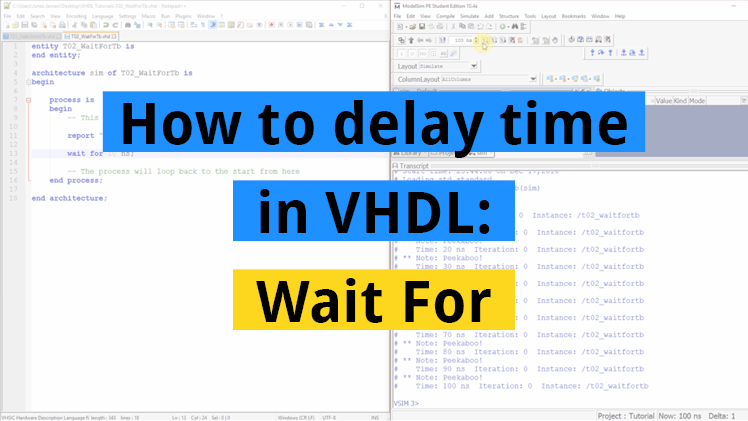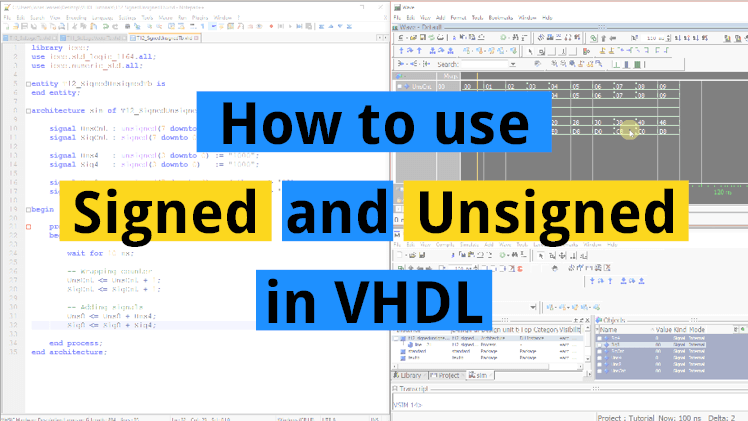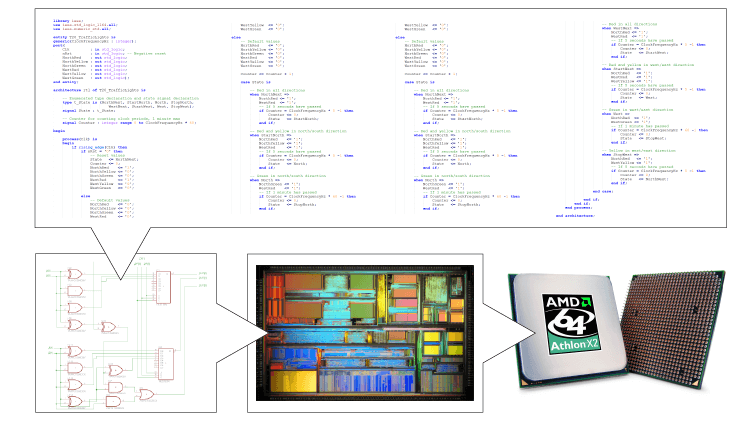I’m from Norway, but I live in Bangkok, Thailand. Before I started VHDLwhiz, I worked as an FPGA engineer in the defense industry. I earned my master’s degree in informatics at the University of Oslo.
Similar Posts

How to delay time in VHDL: Wait For
In the previous tutorial we learned that a process can be thought of as a program thread. We also learned that a wait; statement causes the program to pause indefinitely. But is there a way to make a program wait for any other time value than forever? If we remove the wait; altogether and try…

How to use Signed and Unsigned in VHDL
The signed and unsigned types in VHDL are bit vectors, just like the std_logic_vector type. The difference is that while the std_logic_vector is great for implementing data buses, it’s useless for performing arithmetic operations. If you try to add any number to a std_logic_vector type, ModelSim will produce the compilation error: No feasible entries for…

Using Integrated Logic Analyzer (ILA) and Virtual Input/Output (VIO)
This tutorial covers using the Integrated Logic Analyzer (ILA) and Virtual Input/Output (VIO) cores to debug and monitor your VHDL design in the Xilinx Vivado IDE. In many cases, designers are in need to perform on-chip verification. That is, gaining access to an internal signal’s behavior in their FPGA design for verification purposes. One option…

What is VHDL?
In short, VHDL is a computer language used for designing digital circuits. I use the term “computer language” to distinguish VHDL from other, more common programming languages like Java or C++. But is VHDL a programming language? Yes, it is. It’s a programming language that is of no use when it comes to creating computer…

std_logic vs std_ulogic
VHDL includes few built-in types but offers several additional types through extension packages. Two of the most widely used types are std_logic and std_ulogic. The difference between them is that the former is resolved while the latter isn’t. Before we go on to investigate what it means that a type is resolved, let’s first look…
Constrained random verification
Constrained random verification is a testbench strategy that relies on generating pseudo-random transactions for the device under test (DUT). The goal is to reach functional coverage of a number of predefined events through random interaction with the DUT. Open Source VHDL Verification Methodology (OSVVM) is a free VHDL library which includes a number of convenient…

First of all, thank you so very much!
These are by far the most comprehensible tutorials I have come across like ever!
Brilliant work.
So here my two cents out of gratitude:
Basic VHDL Quiz – part 4
Which statement is not true?
Answer 3 : The return statement cannot be omitted.
-> Correct
So the return statement CAN be omitted???
“Unlike in most other programming languages, the return keyword is mandatory in functions in VHDL.”
Confused by double negation. Me or you 😉
Good catch! I’ve changed the answer now. I was trying to make you think, but in the process I confused myself too 🙂
“The return-keyword cannot be used in a procedure”. I believe that this is incorrect, e.g.
https://web.archive.org/web/20200629023040/http://vhdl.renerta.com:80/source/vhd00060.htm
It is true, of course, that you cannot return a value with it, that’s the only (?) difference between procedures and functions. But, as in other languages, you can use “return” as control flow statement to “force an exit”.
You are right! I missed the possibility of using return statements in procedures without returning a value. According to the Renata link you posted, functions must return a value, while procedures can have return statements, but then without a return value.
I am changing this question.